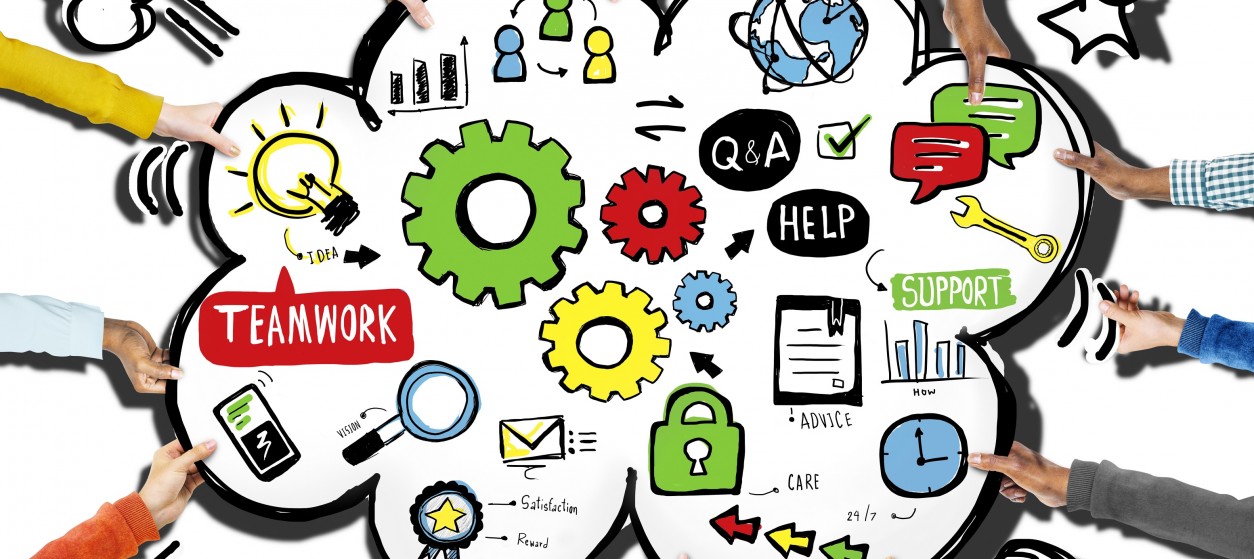Tell me if this rings true to you:
You are having coffee when the phone chimes and Phil from the design team texts you to confirm whether you want a graphic of a shopping cart on the buy button.
You open up your email and Mary asks you if Phil has designed the buy button yet because she wants to show you the micro copy she has written for different versions of the buy button.
Thirty minutes later your boss calls asking when the new check out page would go live.
If you work with a team, this is probably what your day might look like. Today’s office of today is a lot different from how it was even a decade ago, with team members spread out across different time zones.
Communication between them have grown increasingly chaotic and unmanageable, with channels like email, Skype, Whatsapp, texts, and voice all adding to the noise and chatter.
In this cacophony, there is the danger of messages falling through the cracks, and of someone being kept out of the loop.
The end result is always confusion, miscommunication, and inefficiency.
The solution to this conundrum is collaboration.
Building the mindset for collaboration
Building a collaborative company does not start with software. It starts with mindset and culture.
A study on best practices featured in the Harvard Business Review identified eight major factors which helped build a collaborative team. The researchers broadly identified them as:
- Support for collaboration at the top- As with most initiatives, collaboration in an organization can only take hold if the senior leadership, right from the board and CXO level, champions the cause consistently.
- Leaders walking the walk- Organizations become truly collaborative when leaders demonstrate their commitment to collaboration by becoming role models, and by implementing best practices in their daily routines.
- A culture of formal and informal mentoring- Companies where leaders coach subordinates have a collaborative culture as people get to spend time with each other, understand the big picture and build stronger interpersonal relationships.
- Specific training on soft skills related to collaboration- Skills like sharing ideas, brainstorming, listening, and resolving conflicts are critical to collaboration, and companies should teach them to employees.
- Building a strong internal community- Companies that encourage building of informal networks among employees during and after a project has been completed make it easier for a collaborative culture to take root.
- Ambidextrous team leads- Team leads need to be task oriented in the beginning so that high level goals can be set and individual responsibilities of members made clear. After a while, they should work on building trust and goodwill and leave the nuts and bolts of the actual work to individual members.
- Pre-existing connections within teams- Teams where 20% to 40% of members know each other from before are much more collaborative than teams where no one knows each other.
- Role clarity and task ambiguity- When team members know what their exact role is, but work out among themselves the best way to reach a goal, they are more collaborative.
If you can incorporate these attributes in your team, you will over time build a culture of collaboration. And then, with the right tools for your project, you will win at work.
Picking the right collaboration tools
Before you go ‘not another tool again’, hear me out.
Yes, another tool means investing time in familiarizing yourself with how it works, time that you could invest in doing your task.
Introducing another tool to a team would mean persuading other members about its value, getting them to sign up for the tool, walking them through workflows, and modifying habits and routines (very hard!).
But even with all these mental hurdles, investing in the right collaboration tools can, over time:
The collaboration tool or tools that you pick depend on your project.
- Projects that have strict timelines- For projects that have complex tasks but have strict timelines, a Gantt chart based tool that works on a calendar basis is suitable. Use something like TeamGantt, where tasks are ordered chronologically.
- Projects that have many interdependent tasks- Some projects have many moving parts. All these tasks are running at the same time, and yet some tasks are dependent on others. Use tools based on the Kanban methodology, like Trello. Trello looks like a bulletin board and works on a drag and drop principle.
- Projects with discrete tasks- If your project can be broken down into discrete tasks that are not time sensitive, use a simple to-do list based tool like Remember the Milk. These tools have a collaborative component, so you can share your to-do list too.
- Projects with all of the above- You need a kitchen sink approach if your project incorporates all of the above characteristics. Basecamp or Asana could be a good choice in such a case- you can email individual members, have calendars with milestones, pull several members into a discussion, attach files etc.
Building a communication stack
In the game of collaboration, Slack is the reigning superstar, mainly owing to it being the fastest growing B2B app ever.
For those of you who came in late, Slack is a real-time chatting tool, with deep integrations to multiple services like Dropbox, Google Docs, and even other collaboration tools like Basecamp and Trello.
The reason users love Slack with these integrations is that there is no one single collaboration tool that can meet all the needs of an organization. Rather, you want to build a collaboration stack, with a set of closely interlinked tools that meet your current needs.
How to build your collaborative stack will be the topic of a future blog post. Watch this space for more!









